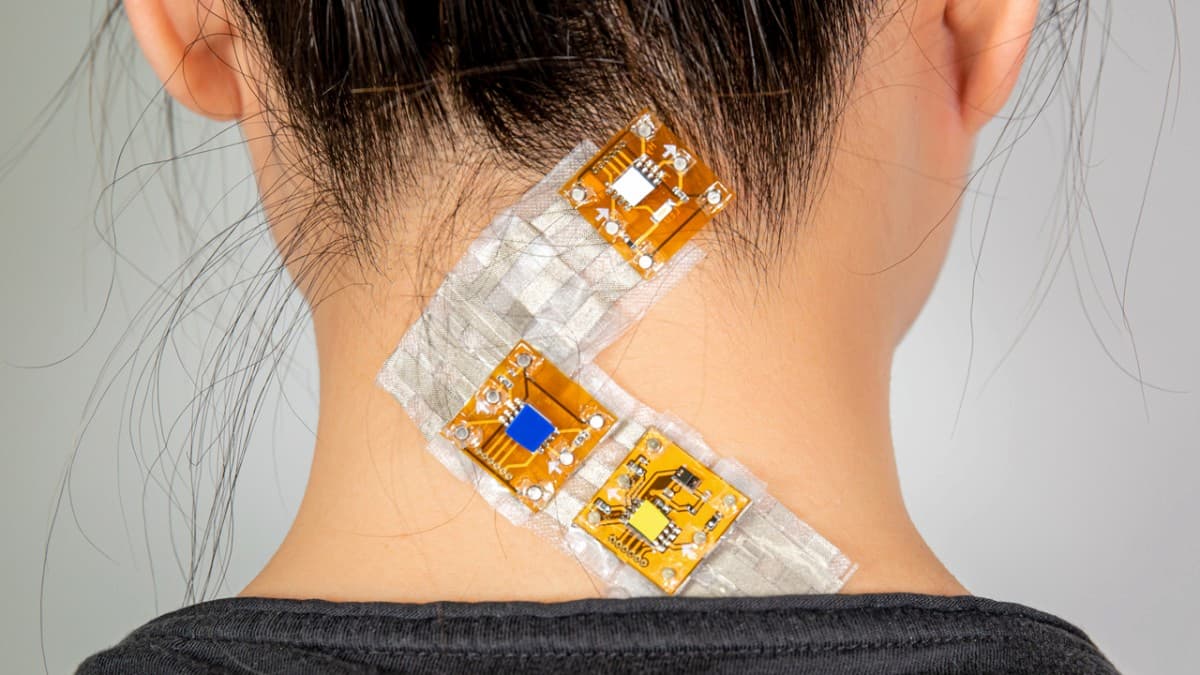Through various examples of everyday access, we have seen that personal computing has become smaller and more intimate over the years, from the evolution of computers, to the wide range of portable devices available today.
The next generation of wearable computing technology, geared primarily toward health and wellness, social interaction, and many other applications, will be even closer to the wearer than a watch or glasses, as it will adhere to the skin.
A small computer attached to the skin
Interfaces on the skin, sometimes known as “smart tattoos,” have the potential to surpass the sensing capabilities of current wearable technologies, but combining comfort and durability in the same device has proven to be a challenge. Now, members of Cornell’s Hybrid Body Lab have devised a reliable, skin-tight interface that’s easy to plug in and out, and can be used for a variety of purposes, from health monitoring to fashion.
“We’ve been working on this for years and I think we’ve finally worked out a lot of the technical challenges.”said Cindy Kao, an assistant professor of human-centered design in the School of Human Ecology. and the lead author of the study. “We wanted to create a modular approach to smart tattoos, to make them as easy as building Legos”, he added. SkinKit is a plug-and-play system that aims to “lower the floor for the entrance” to interfaces in the skin, Kao said.
Kao’s lab is also very aware of cultural differences in general, and believes it’s important to bring these devices to diverse populations. “People from different cultures, backgrounds and ethnicities can have very different perceptions towards these devices”said. “We feel like it’s actually really important to allow more people to have a say in what they want these smart tattoos to do.”.
Fabrication is done with temporary tattoo paper, silicone textile stabilizer, and water, creating a multi-layer, thin-film structure that the group calls “skin fabric.” The layered material can be cut into desired shapes: For their study, the researchers used three-quarter-inch squares, with male-female cut lines so the pieces can be tessellated (joined) and fitted with plate modules. miniaturized flexible printed circuit boards. to perform a series of tasks.
One of the benefits of its design, Ku said, is the reuse component. “The user can put them on and take them off easily”said. “Let’s say today you want to use one of the sensors for a certain purpose, but tomorrow you want it for something else. You can easily separate them and reuse some of the modules to make a new device in minutes”.
To test SkinKit, the researchers first recruited nine participants with STEM and design backgrounds to build and use the devices. Their input from the 90-minute workshop helped inform further modifications, which the group made before conducting a larger two-day study involving 25 participants with STEM and design backgrounds.
The devices designed by the 25 study participants addressed: health and wellness, including temperature sensors to detect fever due to Covid-19; personal safety, including a device that would help the wearer maintain social distance during the pandemic; notification, including an arm-worn device that a runner could wear that would vibrate when a vehicle was nearby; and assistive technology, such as a wrist sensor for the blind that would vibrate when the user was about to collide with an object. Other proven uses were for social, fashion, and athletic training purposes.
On the future of SkinKit, Kao commented: “I think it shows us great potential for STEM learning, especially to be able to engage people who might not originally be interested in STEM”. “But when combined with body art and fashion, I think it has a lot of potential to engage the next generation and broader populations to explore the future of smart tattoos.”.













